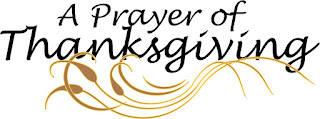The words, the tune, and most of all the spirit of this hymn caught on, crossing cultural, religious, and generational bounds. Today it is known as the “Prayer of Thanksgiving,” and to many it has become an inseparable part of the harvest season. Though it may often evoke images of Pilgrims and Thanksgiving feasts, its words of gratitude capture the feelings of all who have endured adversity and felt to express thanks.2
And really, that’s every one of us. We’ve all had times when we felt overwhelmed or oppressed, alone or forgotten. It’s ironic—but true—that one of the surest ways to feel better in such moments is to consider our blessings. When things aren’t going well, the quickest solution is to give thanks for the things that are going well. Nothing gets us through our adversities quite like a grateful heart.
That’s easier said than done, at least at first. We may need to start small—very small: a bold sunrise or gentle sunset, a changing season, a freshly picked flower, a favorite memory, a loyal friend. Once we determine to look for and cherish the good things, once we resolve to make gratitude a habit of the heart, life just seems to get better, and we feel happier.2
As we count our blessings instead of our burdens, as we measure life by what we have rather than what we don’t have, our lives become a constant, living “prayer of thanksgiving.” And, in the words of the old Dutch folk hymn, this is what will ultimately “make us free.”
- “Prayer of Thanksgiving,” Hymns, no. 93.
- See Karen Lynn Davidson, Our Latter-Day Hymns: The Stories and the Messages(1988), 122; see also Melanie Kirkpatrick, “A Hymn’s Long Journey Home,” Wall Street Journal, Nov. 19, 2005, wsj.com/articles/
SB113234570513601660.









